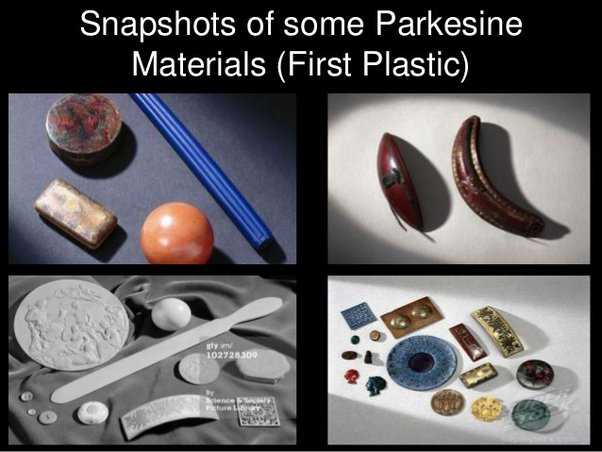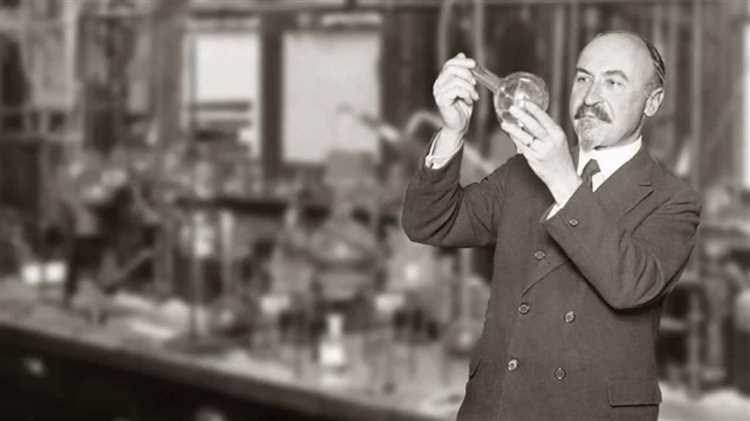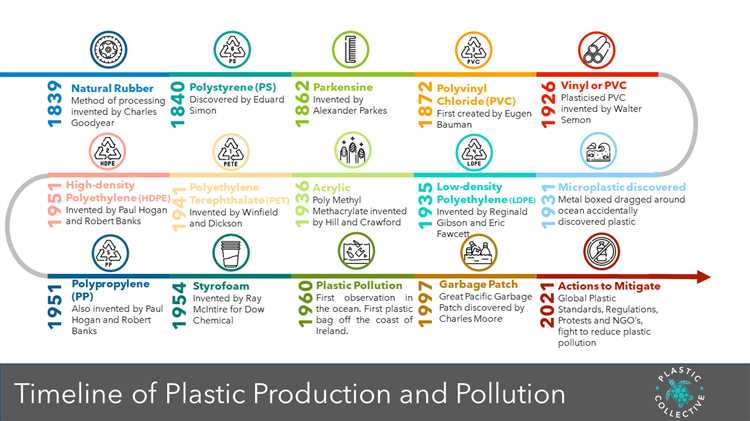
The invention of plastic revolutionized the world and transformed countless industries. While it may come as a surprise to many, the country that first invented plastic was not one traditionally associated with technological breakthroughs. It was in fact Belgium, a small European nation, that pioneered the innovations that would change the course of history.
In the late 19th century, Belgian chemist Leo Hendrik Baekeland made a groundbreaking discovery. He created the first true synthetic plastic, which he named Bakelite. This durable material could be molded into any shape, making it incredibly versatile for a wide range of applications. Baekeland’s invention laid the foundation for the plastic industry as we know it today, and he is often hailed as the father of modern plastics.
Belgium’s contribution to the development of plastic did not stop there. In the following decades, Belgian scientists and engineers continued to push the boundaries of innovation in the field. They developed new types of plastic with enhanced properties, such as transparency, flexibility, and heat resistance. These advancements enabled the creation of products and materials that were previously unimaginable.
Today, plastic is an integral part of our daily lives. It is found in everything from packaging materials and household items to medical devices and electronics. The impact of Belgium’s invention cannot be overstated, as it laid the groundwork for a material that has shaped our modern world. The country’s pioneering spirit and commitment to innovation continue to inspire scientists and engineers around the globe to push the boundaries of what is possible.
- The Birth of Plastic
- A Landmark Invention
- Raising the Bar
- A Plastic Revolution
- Exploring Plastic Varieties
- 1. Polyethylene (PE)
- 2. Polypropylene (PP)
- 3. Polyvinyl Chloride (PVC)
- 4. Polystyrene (PS)
- 5. Polyethylene Terephthalate (PET)
- Diverse Applications
- 1. Packaging Industry
- 2. Construction Sector
- Advancements in Plastic Technology
- 1. Biodegradable Plastics
- 2. High-Performance Plastics
- 4. Smart Plastics
- 5. Nanotechnology in Plastics
- Revolutionary Breakthroughs
- Sustainability of Plastic
- Recycling Initiatives
- Alternative Materials
- Addressing Environmental Concerns
- Promoting Sustainable Practices
- Investing in Research and Innovation
- Q&A:
- Who invented plastic?
- Which country is known for pioneering innovations in plastic?
- What are some of the notable plastic inventions?
- What are the advantages of plastic?
- How has plastic usage impacted the environment?
The Birth of Plastic
Plastic is a material that has completely transformed our modern world. It is lightweight, durable, and can be molded into nearly any shape, making it incredibly versatile. But do you know where plastic actually came from?
The birth of plastic can be traced back to the early 20th century, when an American chemist named Leo Hendrik Baekeland made a groundbreaking discovery. In 1907, Baekeland invented the first fully synthetic plastic, which he called Bakelite.
Prior to Bakelite, there were other forms of plastic, but they were either natural or semi-synthetic. Bakelite was the first plastic that was completely man-made and did not rely on any natural materials. This was a revolutionary concept that opened up a world of possibilities.
Bakelite was created by combining formaldehyde with a substance derived from coal tar. Baekeland discovered that by heating these two ingredients together, he could produce a thick liquid that could be molded into any shape. Once cooled, the liquid would harden into a solid, durable plastic.
The invention of Bakelite led to a wave of innovation in the plastics industry. It paved the way for the development of new plastics with different properties and applications. Today, the world relies heavily on plastic for countless products and industries.
However, it is worth noting that the widespread use of plastic has also brought about environmental concerns. Plastic is not biodegradable and takes hundreds of years to decompose. As a result, our planet is facing a plastic pollution crisis.
In conclusion, the birth of plastic can be attributed to the innovative mind of Leo Hendrik Baekeland. His discovery of Bakelite revolutionized the way we live and paved the way for countless advancements in the world of materials and manufacturing.
A Landmark Invention
Plastic, one of the most versatile and widely used materials in the world, has revolutionized almost every aspect of modern life. But do you know which country had the groundbreaking idea that led to this landmark invention? It was none other than England.
In the early 20th century, a chemist named Alexander Parkes from Birmingham, England, created a material called “Parkesine,” which is considered the first true thermoplastic. Parkesine was made by dissolving cellulose in a mixture of alcohol and camphor, and it could be molded and shaped into various forms when heated and solidified when cooled.
Raising the Bar
Parkesine was a significant discovery because it paved the way for the development of other types of plastics. In fact, it set the bar for future innovations in the field. Parkesine was exhibited at the Great Exhibition in London in 1862, where it garnered much attention and was hailed as a groundbreaking invention.
However, despite its initial success, Parkesine faced several challenges. It was expensive to produce and lacked some of the desirable properties we associate with modern plastics, such as durability and resistance to heat. Nevertheless, Parkesine was a stepping stone, and its invention marked the beginning of the plastics revolution.
A Plastic Revolution
Following the invention of Parkesine, other inventors and chemists built upon this early breakthrough, leading to the creation of new types of plastics with improved properties. This continued development eventually resulted in the invention of Bakelite in 1907 by Belgian-American chemist Leo Baekeland. Bakelite was the first synthetic plastic that retained its shape and solidity at high temperatures and was resistant to electricity, making it ideal for use in electrical insulators.
From there, the plastic industry boomed, with new advancements being made in the production, application, and versatility of plastics. The innovations inspired by Parkesine and amplified by Bakelite opened doors to a wide range of plastic products that have become an indispensable part of our daily lives.
The plastic revolution that started with Parkesine and Bakelite continues to this day, as scientists and inventors uncover new ways to enhance the properties of plastics, making them more sustainable, durable, and eco-friendly.
In conclusion, England holds the honor of being the country that invented plastic with the development of Parkesine. This landmark invention laid the foundation for the plastics industry and set the stage for the countless plastic innovations that followed.
Exploring Plastic Varieties
Plastic is a versatile material that has revolutionized various industries and daily life. There are different types of plastics available, each with its unique characteristics and uses. Let’s explore some of the most commonly used plastic varieties:
1. Polyethylene (PE)
Polyethylene is one of the most widely used plastics in production. It is known for its durability, flexibility, and resistance to moisture and chemicals. PE is commonly used in packaging materials, bottles, toys, and pipes.
2. Polypropylene (PP)
Polypropylene is a popular plastic used in a wide range of applications. It is lightweight, heat resistant, and has good chemical resistance. PP is commonly used in food containers, automotive parts, and medical devices.
3. Polyvinyl Chloride (PVC)
Polyvinyl Chloride is a versatile plastic known for its durability and weather resistance. PVC is used in various applications such as pipes, cables, flooring, and window frames.
4. Polystyrene (PS)

Polystyrene is a lightweight plastic with excellent insulation properties. It is commonly used in packaging materials, disposable cutlery, and insulation foam.
5. Polyethylene Terephthalate (PET)
Polyethylene Terephthalate is a strong and lightweight plastic. It is commonly used in the production of beverage bottles, food containers, and synthetic fibers.
Diverse Applications
Plastic, since its invention, has found a wide range of applications in various industries. Its versatility and adaptability make it an essential material for numerous products. Here are some of the diverse applications of plastic:
1. Packaging Industry
Plastic is extensively used in the packaging industry due to its lightweight, durability, and ability to protect products from damage during transportation. It is used in the production of bottles, containers, bags, films, and wraps, providing a convenient and cost-effective solution for storing and transporting goods.
2. Construction Sector
Plastic has revolutionized the construction sector by offering new possibilities in design, efficiency, and sustainability. It is used in the production of pipes, insulation materials, roofing, flooring, windows, and doors. The lightweight nature of plastic makes it easy to handle and install, reducing construction time and costs.
| Application | Advantages |
|---|---|
| Plastic pipes | Resistance to corrosion and chemicals, easy installation |
| Insulation materials | Thermal and acoustic insulation properties, energy efficiency |
| Roofing | Lightweight, durable, low maintenance |
| Flooring | Waterproof, easy to clean, long-lasting |
| Windows and doors | Energy-efficient, resistant to weather conditions |
These plastic-based construction materials provide improved performance, longevity, and sustainability compared to traditional materials.
In addition to these fields, plastic is widely used in the automotive industry for manufacturing car parts, in the healthcare sector for producing medical devices and equipment, in electronics for making casings and components, in agriculture for irrigation systems and crop protection, and in countless other applications across various industries.
The continuous advancements in plastic manufacturing and processing technologies ensure that the range of applications will continue to expand, leading to further innovations and improvements in our everyday lives.
Advancements in Plastic Technology
Plastic technology has come a long way since its invention. Over the years, there have been numerous advancements in the field, leading to the development of new and improved plastics with a wide range of applications. These advancements have revolutionized industries and everyday life in many ways.
1. Biodegradable Plastics
One of the most significant advancements in plastic technology is the development of biodegradable plastics. These plastics are designed to break down naturally, reducing their environmental impact. They are made from renewable resources such as plant-based materials, making them more sustainable than traditional plastics.
2. High-Performance Plastics
Another major advancement in plastic technology is the creation of high-performance plastics. These plastics possess superior mechanical properties, such as high strength, durability, and heat resistance. They can withstand extreme conditions and are widely used in industries like aerospace, automotive, and electronics.
3. Recycled Plastics
The introduction of recycled plastics has also been a significant advancement in plastic technology. These plastics are made from post-consumer waste and can be used as a sustainable alternative to virgin plastics. Recycling helps reduce the amount of plastic waste in landfills and conserves valuable resources.
4. Smart Plastics
Advances in plastic technology have led to the development of smart plastics that have unique properties and capabilities. These plastics can respond to stimuli such as temperature, light, or pressure, allowing them to be used in various applications, including sensors, actuators, and smart packaging.
5. Nanotechnology in Plastics

The integration of nanotechnology with plastics has opened up new possibilities for enhanced performance and functionality. Nanoparticles are incorporated into plastic materials to improve properties like strength, conductivity, and transparency. This advancement has resulted in the development of innovative products in areas such as electronics, healthcare, and energy.
These advancements in plastic technology have had a profound impact on various industries and have contributed to making our lives more convenient and sustainable. As research and development continue, we can expect even more exciting advancements in the future.
Revolutionary Breakthroughs
Plastic has significantly contributed to the modern lifestyle we enjoy today. Since its invention, there have been several revolutionary breakthroughs in the field of plastic, transforming various industries and improving everyday life.
One of the major breakthroughs was the creation of polyethylene, a versatile and highly durable plastic material. In 1933, scientists at the Imperial Chemical Industries in the United Kingdom discovered polyethylene while conducting experiments with ethylene gas. This breakthrough allowed for the mass production of plastic products, opening up endless possibilities for its use in various applications.
Another significant breakthrough came in 1951 with the invention of polypropylene. Developed by the Italian chemist Giulio Natta, polypropylene revolutionized the packaging industry due to its excellent strength, heat resistance, and transparency. It quickly replaced traditional materials such as glass, metal, and paper, making packaging lighter, more cost-effective, and environmentally friendly.
The invention of polystyrene in 1839 by German apothecary Eduard Simon also marked a groundbreaking achievement in the world of plastics. Polystyrene’s versatility and insulating properties quickly made it a popular choice for a wide range of applications, including packaging, insulation, and disposable foodservice items.
One of the most notable breakthroughs in recent years is the development of biodegradable plastics. As concerns over environmental pollution caused by plastic waste grew, scientists and engineers worked tirelessly to find solutions. Biodegradable plastics, made from renewable resources such as cornstarch or sugarcane, offer a more sustainable alternative to traditional plastics. These breakthroughs have played a pivotal role in the ongoing efforts to reduce plastic waste and protect our planet.
In conclusion, the invention of plastic has led to numerous revolutionary breakthroughs that have shaped the modern world. The continuous innovation and advancements in plastic technology have made it an essential material in various industries. From polyethylene to biodegradable plastics, these breakthroughs have paved the way for an ever-evolving plastic industry that continues to push boundaries and improve our lives.
Sustainability of Plastic
Plastic has long been a staple material in our society, with numerous applications across various industries. However, its sustainability has come under scrutiny in recent years due to its detrimental impact on the environment.
One of the main concerns surrounding plastic is its non-biodegradability. Unlike natural materials, such as wood or paper, plastic does not break down over time. This means that the plastic waste we produce will persist in the environment for hundreds, if not thousands, of years.
Furthermore, the production of plastic is heavily dependent on fossil fuels, which contributes to greenhouse gas emissions and climate change. The extraction and processing of fossil fuels for plastic production also have detrimental impacts on ecosystems and local communities.
Recycling Initiatives
To combat these environmental issues, recycling initiatives have been implemented around the world. Recycling helps to reduce the amount of plastic waste that ends up in landfills or pollutes our oceans, as well as decrease the demand for new plastic production.
However, despite these efforts, recycling rates for plastic remain relatively low. This is primarily due to the complexity of plastic recycling processes, as different types of plastics require different treatment methods.
Alternative Materials
In addition to recycling, the development of alternative materials and methods is crucial for promoting the sustainability of plastic. Scientists and researchers are exploring various options, such as bioplastics, which are derived from renewable resources and biodegrade more easily than traditional plastics.
Another approach involves designing more durable and long-lasting plastic products, reducing the need for frequent replacements and disposal. This approach not only reduces waste but also conserves resources and energy.
It is important for individuals, businesses, and governments to prioritize the sustainable use of plastic. By adopting recycling practices, supporting research into alternative materials, and promoting responsible consumption, we can mitigate the environmental impact of plastic and work towards a more sustainable future.
Addressing Environmental Concerns
While plastic has undoubtedly revolutionized various industries, it has also raised significant environmental concerns. The country that invented plastic acknowledges these concerns and is taking proactive measures to mitigate the negative impact on the environment.
Promoting Sustainable Practices

The government and industry leaders in the country have recognized the need for sustainable practices in the production and consumption of plastic. Efforts are being made to reduce plastic waste and encourage recycling. The country has implemented strict regulations on single-use plastics and is promoting the use of biodegradable alternatives.
Investing in Research and Innovation
Recognizing the urgency of finding sustainable solutions, the country has also invested heavily in research and development of innovative technologies. This includes exploring and supporting initiatives in bioplastics, recycling technologies, and eco-friendly packaging. The aim is to develop alternatives that are not only environmentally-friendly but also economically viable.
| Initiatives | Impact |
|---|---|
| Plastic recycling programs | Reduces the amount of plastic waste ending up in landfills and oceans. |
| Ban on single-use plastics | Encourages the use of reusable alternatives and reduces plastic pollution. |
| Support for bioplastics research | Promotes the development of sustainable plastic alternatives. |
| Education and awareness campaigns | Raises public awareness about the environmental impact of plastic and promotes responsible consumption. |
Through these efforts, the country aims to lead the way in addressing the environmental concerns associated with plastic. By adopting sustainable practices and fostering innovation, it is working towards a future where plastic can coexist harmoniously with the environment.
Q&A:
Who invented plastic?
Plastic was invented by Alexander Parkes in the year 1855.
Which country is known for pioneering innovations in plastic?
The United States is known for pioneering innovations in plastic.
What are some of the notable plastic inventions?
Some notable plastic inventions include Bakelite, the first synthetic plastic, and Nylon, the first synthetic fiber.
What are the advantages of plastic?
Plastic is lightweight, durable, and versatile. It is also resistant to chemicals and can be molded into different shapes.
How has plastic usage impacted the environment?
Plastic usage has had a negative impact on the environment due to its non-biodegradable nature. It leads to pollution, especially in the form of plastic waste in oceans and landfills.